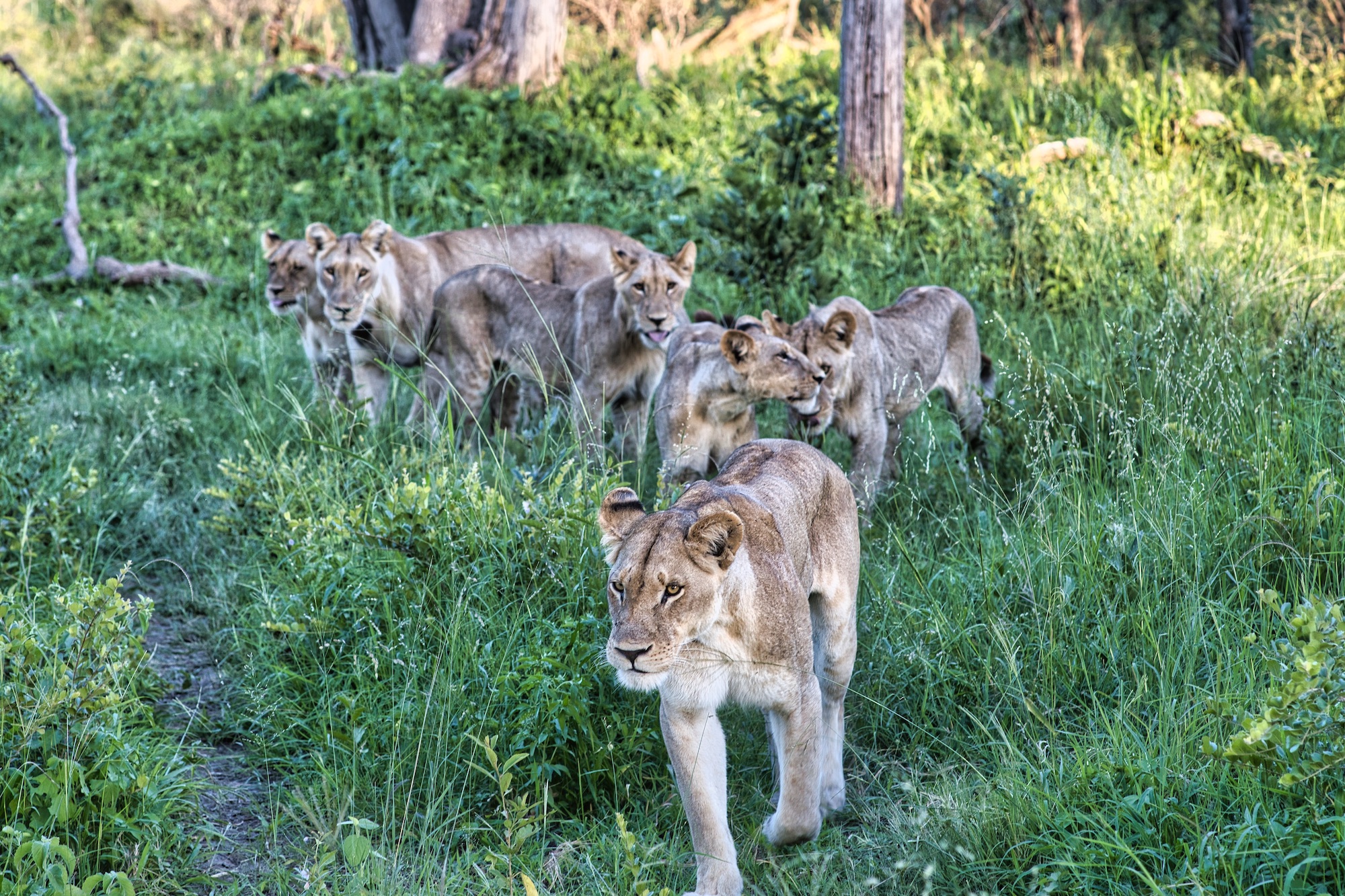I’ve been buzzing around in my idea lab, adding the final touches to an intimate in-person experience I’ve spent years envisioning. I’m finally announcing it next week—keep an eye on your inbox come Tuesday!
In the meantime, enjoy this fan favorite from the newsletter archives. It’s a post I shared a while back that struck a chord with many readers—and it’s one I still come back to myself.
I spent the last two weeks in the remote wilderness of Botswana.
This wasn’t just a safari. It was an immersion into the untamed natural world. We were surrounded by wild dogs on the hunt, leopards lounging in trees, elephants claiming right-of-way, and lions doing what lions do—being majestic and mildly terrifying.
The journey to our campsite felt like a subplot in The Amazing Race—it involved jets, prop planes, and a helicopter ride (with one takeoff delayed by a family of warthogs crossing the airstrip!).
And yet, surrounded by awe and adrenaline, the most memorable moment came from something completely still.
After driving around the bush for hours, we came across a pride of lions on the hunt (Here’s a photo I snapped). For a while, they prowled their territory—a seamless blend of power and patience—before deciding it was time for a break.
What struck me wasn’t their decision to rest.
It was how they rested.
For me, “rest” often means switching gears: putting down work to pick up a book, a show, a podcast—still active, just in a different direction. Like giving your brain a costume change without ever taking it off stage.
But these lions? They didn’t multitask their way into relaxation. They sprawled. Flopped, really. Eyes closed. No vigilance. No stimulation. Just full-body surrender to the sun and the silence. (Here’s a photo).
This stark contrast between human and lion approaches to rest—active versus complete—struck a chord. Active rest merely diverts our energy from one channel to another, providing a change of scenery. But complete rest pulls us off the mental merry-go-round, offering our minds and bodies a chance to reset in a way that partial engagement can’t.
Inspired, I began experimenting with this lion-like form of rest. Instead of switching tasks as a mental break, I embraced stillness. I would lie down for 15 minutes to disconnect entirely, close my eyes, and just be.
The results were astonishing. This practice of “doing nothing” left me feeling more recharged than any “active rest” ritual I’d ever tried before. Tasks that once took two hours started taking one.
What began as a small experiment turned into a ritual. These days, it’s so ingrained that when I say, “Time for a lion rest,” my dog Sputnik bolts into the bedroom and launches himself onto the bed, ready for our daily dose of stillness.
Often, we’re not napping. We’re just pausing. Just 15 minutes of complete stillness. The noise fades, and something powerful returns: clarity, creativity, and the energy to begin again—this time, without the mental static.
You might be thinking, “Sure, must be nice to have time to lie around like a big cat. I’ve got deadlines and meetings and Slack notifications.”
But here’s the thing: these lions prioritized rest despite the dangers lurking nearby. Their to-do list included “catch food” and “don’t become food.” Your PowerPoint presentation pales in comparison. If they can rest, so can you.
If you’re feeling a low-level form of tiredness throughout the day, you might be relying too much on active rest and too little on complete rest.
So, the next time you hesitate to take a full break, thinking of your endless to-do list or looming deadlines, remember the lions of Botswana. Give yourself the permission to rest fully and to shut down completely.
Sometimes, the most productive thing you can do is absolutely nothing at all.
Bold



